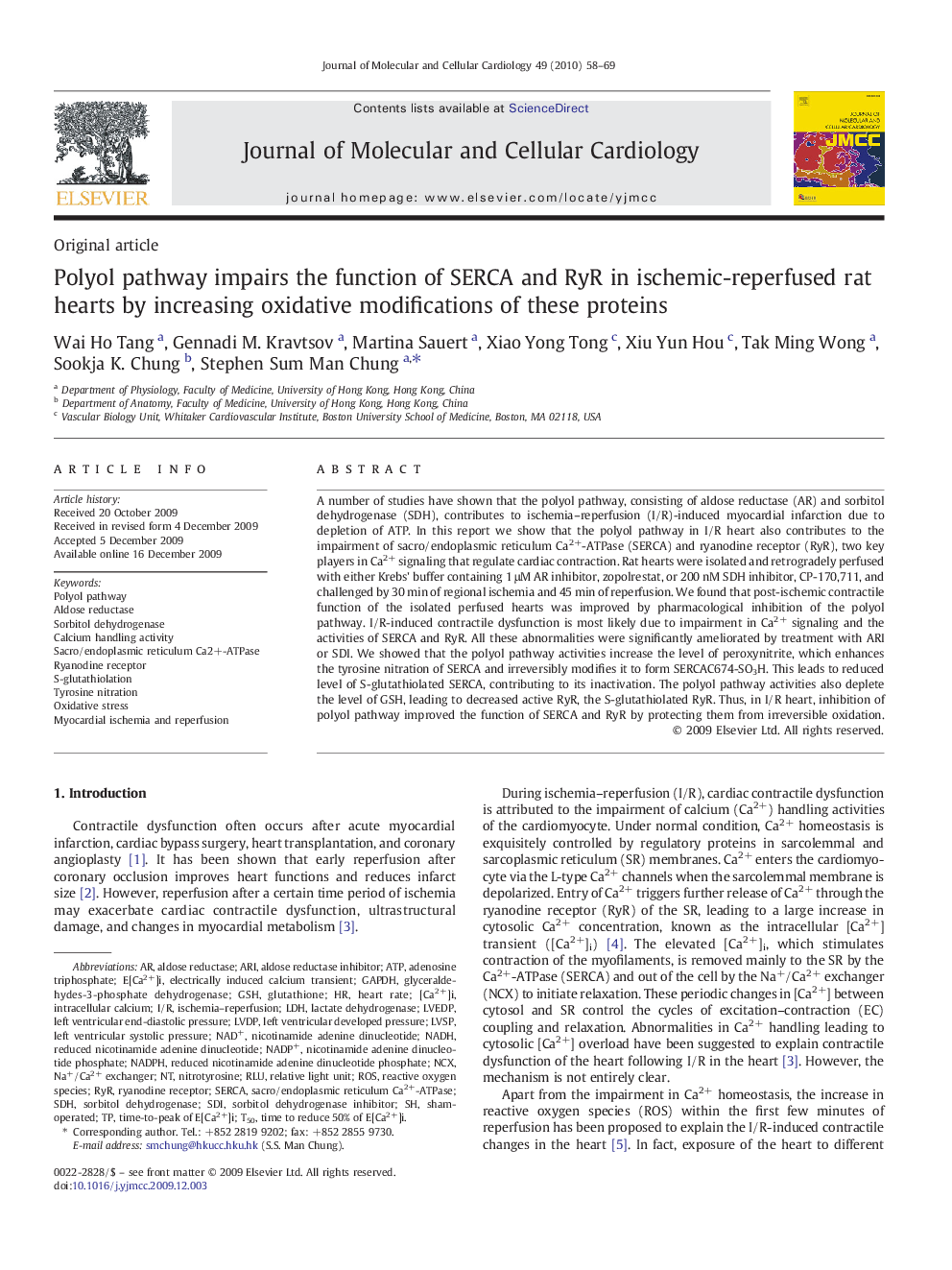| Article ID | Journal | Published Year | Pages | File Type |
|---|---|---|---|---|
| 10954013 | Journal of Molecular and Cellular Cardiology | 2010 | 12 Pages |
Abstract
A number of studies have shown that the polyol pathway, consisting of aldose reductase (AR) and sorbitol dehydrogenase (SDH), contributes to ischemia-reperfusion (I/R)-induced myocardial infarction due to depletion of ATP. In this report we show that the polyol pathway in I/R heart also contributes to the impairment of sacro/endoplasmic reticulum Ca2+-ATPase (SERCA) and ryanodine receptor (RyR), two key players in Ca2+ signaling that regulate cardiac contraction. Rat hearts were isolated and retrogradely perfused with either Krebs' buffer containing 1 μM AR inhibitor, zopolrestat, or 200 nM SDH inhibitor, CP-170,711, and challenged by 30 min of regional ischemia and 45 min of reperfusion. We found that post-ischemic contractile function of the isolated perfused hearts was improved by pharmacological inhibition of the polyol pathway. I/R-induced contractile dysfunction is most likely due to impairment in Ca2+ signaling and the activities of SERCA and RyR. All these abnormalities were significantly ameliorated by treatment with ARI or SDI. We showed that the polyol pathway activities increase the level of peroxynitrite, which enhances the tyrosine nitration of SERCA and irreversibly modifies it to form SERCAC674-SO3H. This leads to reduced level of S-glutathiolated SERCA, contributing to its inactivation. The polyol pathway activities also deplete the level of GSH, leading to decreased active RyR, the S-glutathiolated RyR. Thus, in I/R heart, inhibition of polyol pathway improved the function of SERCA and RyR by protecting them from irreversible oxidation.
Keywords
SDHRyRRLULVDPGAPDHGSHLVEDPNADPHLVSPsorbitol dehydrogenaset50S-GlutathiolationSDINCXARII/RNa+/Ca2+ exchangerNAD+NADP+ROS[Ca2+]iAdenosine TriphosphateATPAldose reductaseMyocardial ischemia and reperfusionischemia–reperfusionLeft ventricular developed pressureOxidative stresssham-operatedHeart rateleft ventricular systolic pressureleft ventricular end-diastolic pressureSERCAlactate dehydrogenaseLDHpolyol pathwayAldose reductase inhibitorNADHTyrosine nitrationnitrotyrosinenicotinamide adenine dinucleotidenicotinamide adenine dinucleotide phosphaterelative light unitreduced nicotinamide adenine dinucleotidereduced nicotinamide adenine dinucleotide phosphateIntracellular calciumGlutathioneglyceraldehydes-3-phosphate dehydrogenaseReactive oxygen speciesRyanodine receptor
Related Topics
Life Sciences
Biochemistry, Genetics and Molecular Biology
Cell Biology
Authors
Wai Ho Tang, Gennadi M. Kravtsov, Martina Sauert, Xiao Yong Tong, Xiu Yun Hou, Tak Ming Wong, Sookja K. Chung, Stephen Sum Man Chung,
